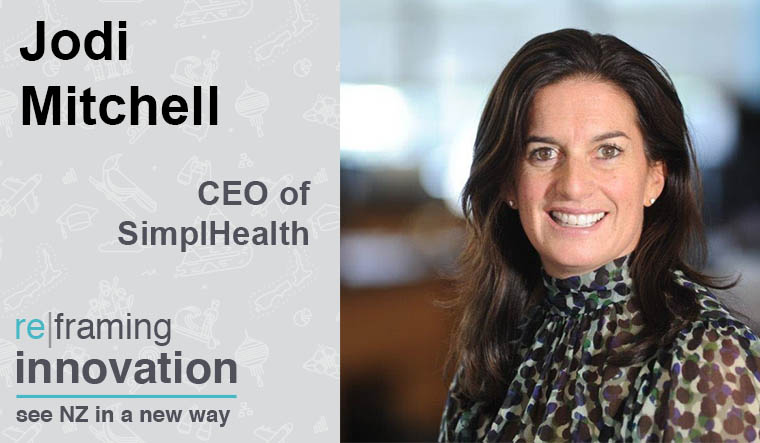Innovation is bandied about as the word “de rigueur” – it would seem we all need to be innovative and it’s even become the subject of surveys in national newspapers.
A recent New Zealand Herald article reported 97% of bosses saying their organisation has an innovation culture, when just 23% of employees thought this was the case. The study by recruitment firm Hudson NZ revealed a gap in understanding and probably a lack of conversation between management and teams, which after all is one of the most important foundations for innovation.
So what’s happening? Is it that we are now so bombarded by information and constant digital disruption that we all just have to be innovative as a common denominator? I don’t think so, because the best innovation is probably the simplest and the process has been around for a long time. While innovation does seem to be the subject of a lot of current commentary, as words go, it’s not exactly innovative – derived from the Latin word innovat or “renewed or altered” its use started in the 16th century.
When we talk about innovation we usually refer to a result, something tangible we can touch, discuss or look at. But the process of innovation actually starts much earlier – it starts with conversations about doing something new or making changes to something established.
Here’s an example involving our company:
SimplHealth has evolved from another business called The Simpl Group, a systems integrator for companies working in a broad range of sectors. A focus area of ours has always been healthcare, along with a passion to make a difference to people’s lives through great innovation. Examples of systems developed include technology to run New Zealand’s national disabilities management programme called Socrates, the electronic prescription service in Australia called eRX and New Zealand’s School Based Vaccination Service. Then three years ago we decided to focus 100% on healthcare and we became SimplHealth – we made a simple change (no pun intended) to something already established and became very different.
Since then our view of innovation has developed, but it is still reliant on a steady continuous flow of ideas, discussions and observations involving our whole team, as well as associates, business networks and even friends and family. Innovation is all about using the resources we have, either existing or new, to generate better health outcomes. From our perspective it involves having information as a foundation, sharing it and collaborating, and then developing processes to improve the delivery of healthcare.
Take prescriptions for example. The archaic process of writing prescriptions has been around for decades, if not centuries. The pain point of this process is inaccuracy that can impact people’s health, and inefficiency because pharmacists had to decipher and then retype medication information into a separate system. So we developed SimplHealth ePrescribing, a digital system that increases patient safety by sharing prescription and medication information between healthcare professionals securely, whenever needed. This technology now supports the New Zealand ePrescription Service – we just made an old system digital.
The enablers of innovation are the people in the system – the patients, the doctors, pharmacists and other healthcare providers. Real innovation can only happen with the input of the various groups included in healthcare. The biggest opportunity for innovation now is for collaboration between people, companies and other organisations to develop new solutions. Real innovation starts with conversations and listening so as to understand the problems that need solutions.
Ten years ago you probably wouldn’t have seen two IT companies embracing collaboration but now it’s imperative. In New Zealand the health IT sector has taken partnership on board. In December last year, twelve health IT companies signalled an intent to collaborate together as NZ Inc. to deliver the best value and improve healthcare for millions of New Zealanders. Supporting this is the rising power of people and a renewed approach to information – this People Power concept is now one of the central strategic themes of New Zealand’s recently launched Health Strategy.
The graphs below show we are increasingly digitally focused when it comes to healthcare, with internet use for healthcare growing between ages and ethnic groups and health services being in the top five searches.


Innovation is about doing things differently and using what we already have to create something better for the future, and it involves everyone. It’s a simple idea that’s probably been over-complicated. With the growing data available, and technology for sharing and collaboration, now really is the age for innovation – but it all starts with a conversation.
About
Jodi Mitchell is CEO of SimplHealth, a health IT specialist delivering technology solutions to help the sharing of information, safely and securely, between healthcare professionals, to support better decisions, enhance health services and deliver cost savings.
Join the conversation
Join the conversation by posting in the comments below or follow #innovationNZ on Twitter. Comments policy: play nice. Comments containing profanities, offensive remarks or spam will be removed.
Want to start your own conversation?
Search for figures, data charts and maps compiled by Figure.NZ using the search box or Figure.NZ business guided search. Sign-up for a FigureNZ account to save content of interest to your very own data board and tell us about it on social media:
| Twitter: #innovationNZ | @FigureNZ & @PunahaMatatini |
| @FigureNZ & @tepunahamatatini |


